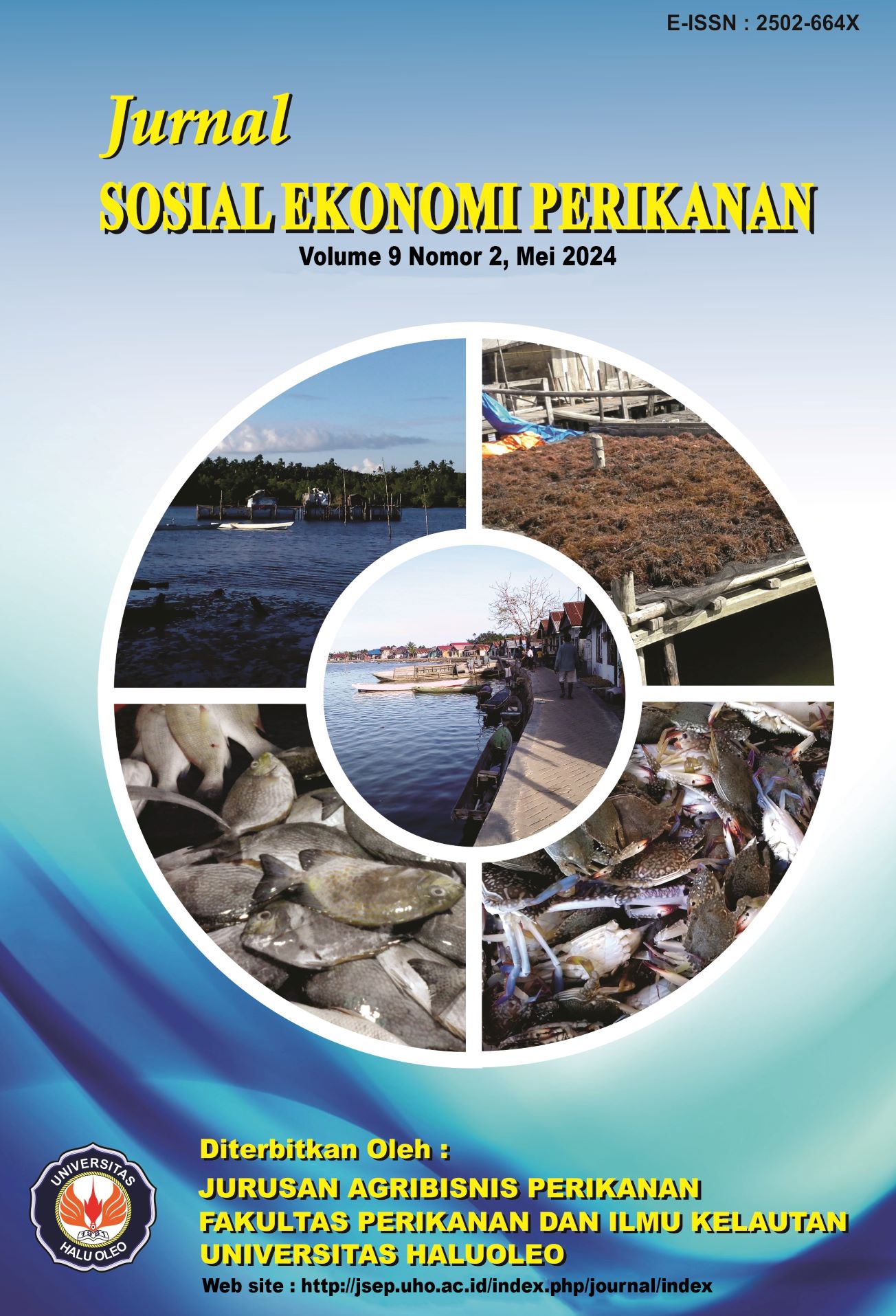Analysis of actual costs in the household scale biofloc system of vaname shrimp nursery business
DOI:
https://doi.org/10.33772/jsep.v9i2.99Keywords:
Shrimp;biofloc; cost;actual;businessAbstract
Household-scale shrimp nursery using a biofloc system is an innovative approach to shrimp cultivation, with great potential to be promoted as a source of additional income for fishing households in coastal areas. However, there is still a need for a deeper study regarding the components and amount of costs incurred in running this business. The main purpose of actual cost analysis is to compare the actual costs incurred with the previously planned cost estimates. This helps businesses understand in detail how their budget is used and identify areas where expenses can be better managed or reduced, thereby determining the selling price of a product. Based on the analysis, there is a difference between the standard purchasing price (HBs) and the actual purchasing price (HBa) which is specific to certain material component items. The price difference calculation is determined to have the characteristic of a profitable price difference because HBa < HBs, so the price difference is said to be profitable. This favorable price difference will be allocated for unexpected costs, such as additional costs for feed, or maintenance costs for equipment and materials used in the household scale biofloc system shrimp nursery business
References
Giatman M. (2006). Ekonomi Teknik. RajaGrafindo Persada.
[KKP] Kementerian Kelautan dan Perikanan. (2022). Produksi Perikanan. Diakses dari https://statistik.kkp.go.id/home.php ?m=prod_ikan_prov&i=2.
Makmur, A.I.J. Asaad dan Rachmansyah. (2021). Small scale shrimp (Litopenaeus vannamei) nursery technology at high stocking density. 4th International Symposium on Marine Science and Fisheries. IOP Conf. Series: Earth and Environmental Science 860 (2021) 012025. doi:10.1088/1755-1315/860/1/012025
Rony dan Helmy. (1990). Akuntansi Biaya Pengantar untuk perencanaan dan Pengendalian biaya produksi, Lembaga penerbit Fakultas Ekonomi Universitas Indonesia, Jakarta
Sa’adah, W dan K. Milah. (2019). Permintaan Udang Vannamei (Litopenaeus vannamei) Di Kelompok Pembudidaya Udang At-Taqwa Paciran Lamongan. Jurnal Pemikiran Masyarakat Ilmiah Berwawasan Agribisnis, 5(2): 243-251
Tajerin & Mohammad Noor (2004). Daya Saing Udang Indonesia Di Pasar Internasional: Sebuah Analisis Dengan Pendekatan Pangsa Pasar Menggunakan Model Ekonometrika. Jurnal Ekonomi Pembangunan, 9(2): 177–191.
Downloads
Published
How to Cite
Issue
Section
License
Copyright (c) 2024 Pono Suderajad

This work is licensed under a Creative Commons Attribution 4.0 International License.
Jurnal Sosial Ekonomi Perikanan (JSEP) dilisensikan di bawah lisensi (CC Attribution 4.0). Pengguna bebas untuk menggubah, memperbaiki, dan membuat ciptaan turunan bukan untuk kepentingan komersial, dan walau mereka harus mencantumkan kredit kepada Anda dan tidak dapat memperoleh keuntungan komersial, mereka tidak harus melisensikan ciptaan turunan dengan syarat yang sama dengan ciptaan asli.





